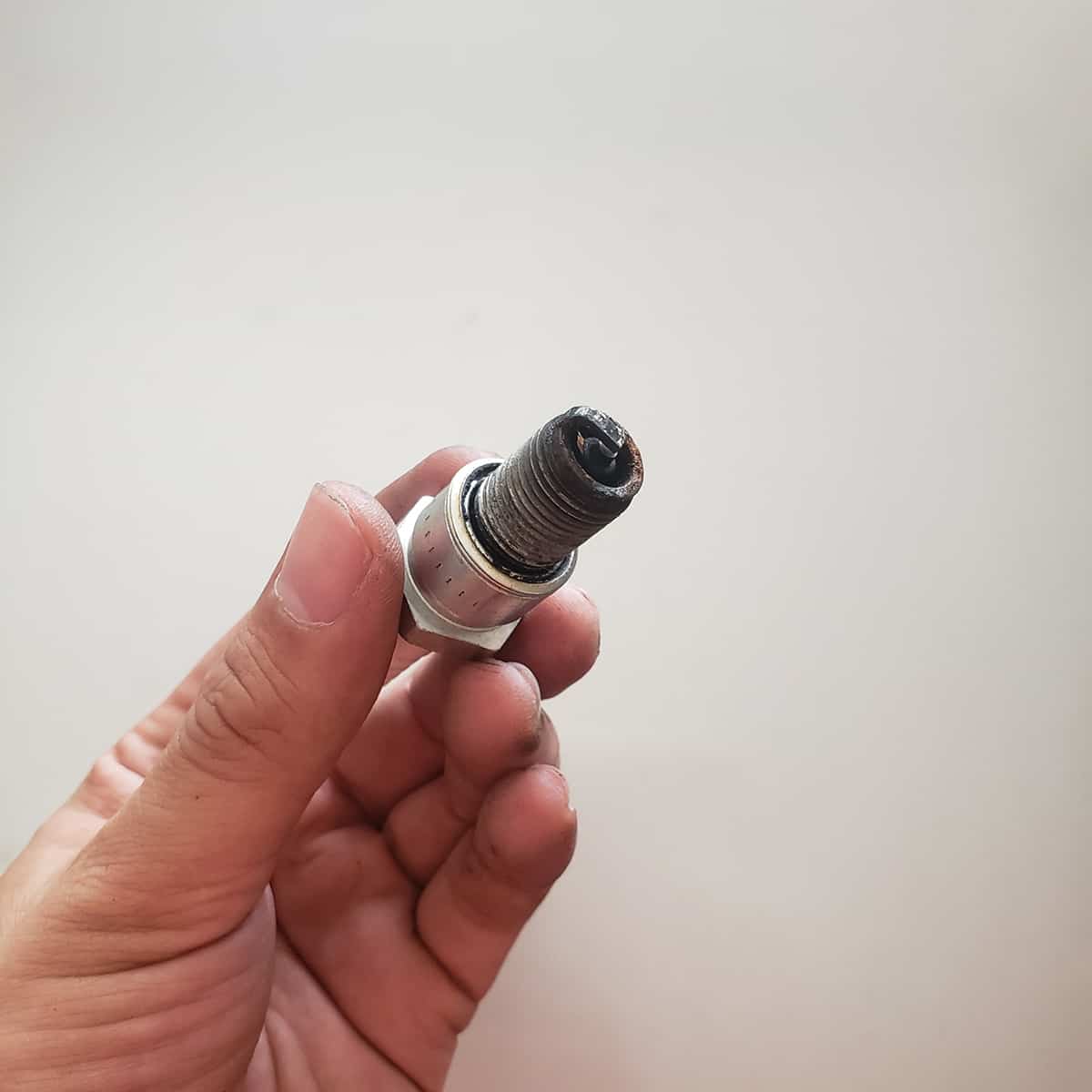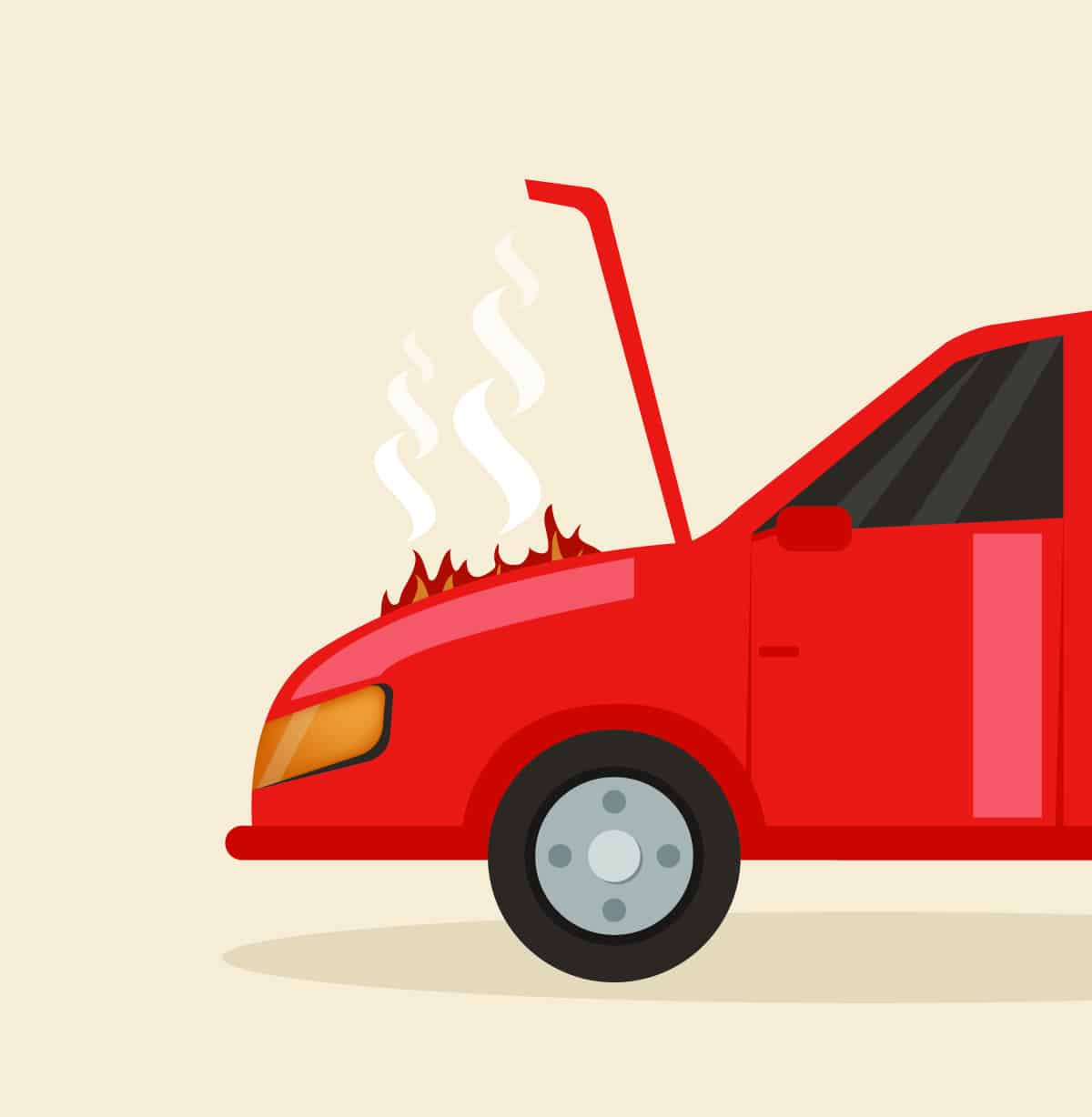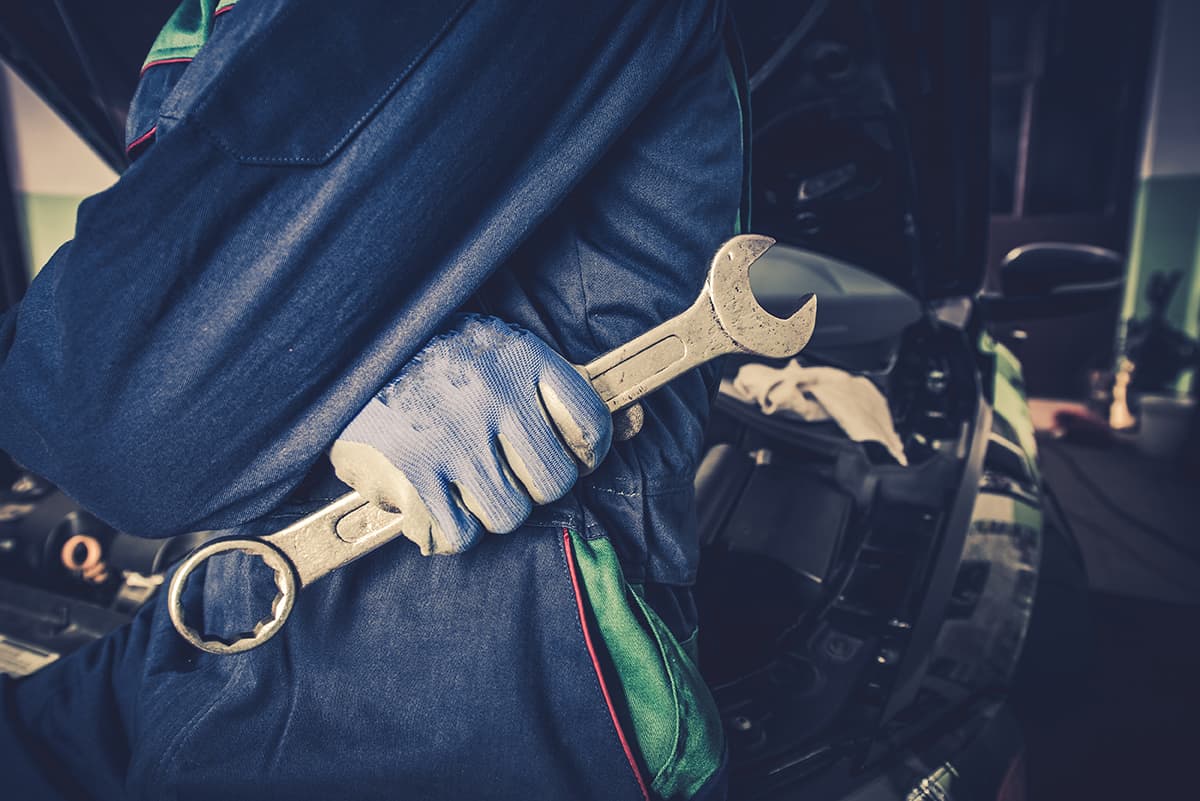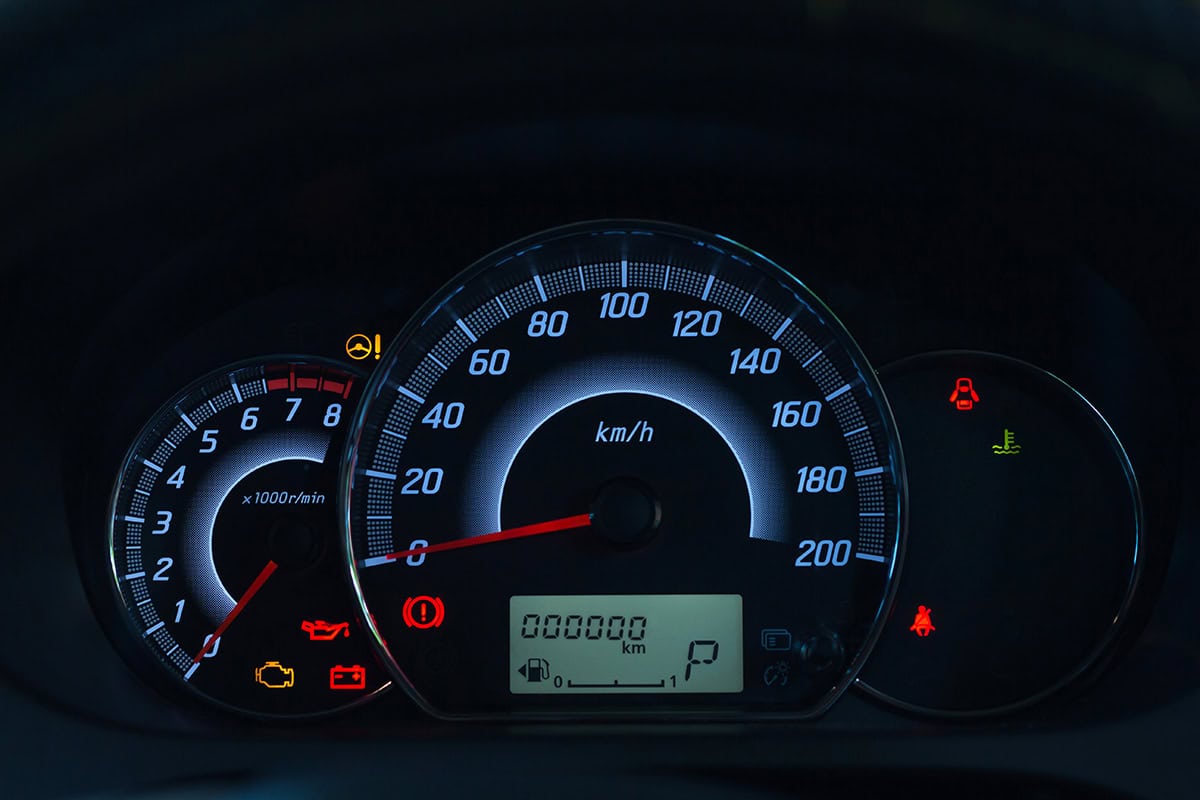Engines are the heart of our vehicles, and just like our own bodies, they require proper care and attention to function at their best. When something goes wrong, our cars often give us signals in the form of warning lights or messages. One such message is the “Engine fault service now” warning.
The causes of the “Engine fault service now” message can include:
- Faulty spark plugs or ignition system
- Issues with the fuel system
- Problems in the air intake or exhaust system
- Cooling system failures
- Mechanical or structural breakdowns
In this article, we’ll explore the common engine faults that trigger this message, discuss their causes, and provide guidance on how to diagnose and fix these issues.
Common Engine Faults
When something goes wrong with your car’s engine, it can show various signs. You should know these signs, so you can take action before the problem gets worse.
1. Check engine light
The check engine light is a warning sign on your car’s dashboard. It turns on when there’s a problem with the engine or related parts. The light could mean several issues, from a loose gas cap to serious engine problems.
2. Loss of power
If your car is losing power, it might struggle to accelerate, or you may feel the engine isn’t as strong as it used to be. This can happen because of various reasons, like issues with the fuel system, air intake, or exhaust.
3. Engine overheating
An overheating engine is a severe problem. It can happen if the cooling system isn’t working correctly, or if there’s a leak in the coolant. When an engine overheats, it can cause damage to the engine’s parts and even lead to complete engine failure.
4. Engine misfires
A misfiring engine happens when one or more of the engine’s cylinders don’t fire correctly. This can cause your car to shake, lose power, and have poor fuel efficiency. Misfiring can be caused by problems with the spark plugs, ignition system, or fuel injectors.
5. Strange noises
Unusual noises coming from your engine can be a sign of trouble. Some common sounds include knocking, squealing, or grinding. These noises could indicate problems with the engine’s belts, bearings, or other components.
Causes and Solutions of Engine Faults
Understanding why engine problems happen can help you fix them and prevent future issues. In this section, we’ll explain the common causes of engine faults and how they relate to the warning signs we discussed earlier.
1. Spark plugs and ignition issues

Spark plugs play a crucial role in starting your engine. They create a spark that ignites the fuel-air mixture in the engine’s cylinders. If a spark plug is faulty or the ignition system has a problem, your engine might misfire or have trouble starting.
Solution: Replace the bad spark plugs
- Turn off the engine and let it cool down.
- Locate the spark plugs in your engine (refer to your car’s manual if needed).
- Remove the spark plug wires carefully.
- Use a spark plug socket and wrench to remove the spark plugs.
- Inspect the spark plugs for wear, cracks, or buildup.
- If necessary, replace the spark plugs with new ones.
- Reattach the spark plug wires and make sure they are secure.
2. Fuel system problems
Your car’s fuel system delivers fuel from the tank to the engine. If there’s a problem with the fuel pump, injectors, or fuel filter, your engine might not get the right amount of fuel. This can lead to a loss of power, misfiring, or poor fuel efficiency.
Solution: Inspect and clean, repair, or replace worn fuel system components
- Replace the fuel filter according to your car’s maintenance schedule.
- Check the fuel pump for any signs of damage or malfunction.
- Inspect the fuel injectors for clogs or leaks, and clean or replace them if necessary.
- Ensure that the fuel lines are not damaged, pinched, or leaking.
3. Air Intake and exhaust system issues
Your engine needs the right mix of air and fuel to work correctly. Problems with the air intake system, like a dirty air filter or a leak in the intake manifold, can cause the engine to get too much or too little air. This can lead to a loss of power, misfiring, or poor fuel efficiency. Similarly, issues with the exhaust system, like a clogged catalytic converter, can also affect engine performance.
Solution: Inspect and clean, repair, or replace worn intake and exhaust system components
- Inspect the air filter and replace it if it’s dirty or damaged.
- Check the intake manifold for cracks or leaks and repair or replace it if needed.
- Examine the exhaust system, including the catalytic converter and muffler, for damage, clogs, or leaks.
- Repair or replace any damaged parts to ensure proper airflow.
4. Cooling system failures

The cooling system keeps your engine from overheating. It circulates coolant around the engine to absorb heat and then sends it to the radiator to cool down. If there’s a leak in the system or the water pump, thermostat, or radiator isn’t working properly, your engine can overheat.
Solution: Inspect and clean, repair, or replace worn cooling system components
- Check the coolant level in the reservoir and top it off if necessary.
- Inspect the radiator for leaks, damage, or blockages, and clean or replace it if needed.
- Examine the hoses and connections for leaks or cracks and replace them if necessary.
- Check the water pump and thermostat for proper function and replace them if they are faulty.
5. Mechanical and structural failures
Sometimes, engine faults are caused by problems with the engine’s internal parts. This can include issues with the belts, bearings, or other components. If a part breaks or wears out, it can cause strange noises, loss of power, or other engine problems.
Solution: Inspect and replace worn parts
- Listen for any unusual noises while the engine is running to help identify the problem area.
- Inspect the engine belts for wear or damage, and replace them if needed.
- Check the engine’s bearings for signs of wear or damage, and replace them if necessary.
- If you are unable to identify or fix the issue, consult a professional mechanic for assistance.
Diagnostic Tools and Techniques
To figure out what’s wrong with your car’s engine, you can use some tools and techniques that help find the cause of the problem.
1. Onboard Diagnostic System (OBD-II)
Most cars made after 1996 have a built-in computer system called OBD-II. This system monitors your car’s performance and can tell you if there’s a problem with the engine or other parts. You can access this information by connecting an OBD-II scanner to a special port in your car, usually found under the dashboard.
2. Diagnostic Trouble Codes (DTCs)
When the OBD-II system finds a problem, it generates a code called a Diagnostic Trouble Code (DTC). These codes can tell you what’s wrong with your car. For example, a code like “P0300” means the engine is misfiring. You can look up the meaning of DTCs online or in a repair manual to help you figure out the problem.
3. Scanning tools
There are different types of scanning tools you can use to read the DTCs from your car’s OBD-II system. Some scanners are simple and only display the codes, while others are more advanced and can show live data from your car’s sensors.
4. Visual inspections
Sometimes, you can find the cause of an engine problem just by looking at the engine and its parts. Check for loose or damaged wires, leaks, cracks, or any other signs of damage. Make sure to turn off the engine and let it cool down before doing a visual inspection.
5. Test Drives
Taking your car for a test drive can help you notice any unusual noises, vibrations, or performance issues. Pay attention to how your car drives and feels, and take note of any problems.
Prevention of Engine Faults

Keeping your car’s engine in good shape is essential for avoiding problems and costly repairs.
1. Regular maintenance
One of the best ways to prevent engine problems is by following your car’s maintenance schedule. This includes changing the oil, replacing the air filter, and checking fluid levels regularly. Your car’s manual will have detailed information on when to perform these tasks.
2. Pay attention to warning lights
If a warning light comes on your dashboard, don’t ignore it. These lights are designed to alert you to potential problems with your engine or other parts of your car. Addressing these issues early can prevent more severe damage and costly repairs.
3. Listen for unusual noises
Unusual noises can be a sign of trouble with your engine. If you hear strange sounds like knocking, squealing, or grinding, it’s essential to find the cause and fix the problem before it gets worse.
4. Monitor your car’s performance
Pay attention to how your car is driving. If you notice a loss of power, poor fuel efficiency, or other performance issues, it’s essential to investigate and address the problem. These issues can be signs of engine faults that need to be fixed.
5. Drive responsibly
Driving your car responsibly can help prevent engine problems. Avoid aggressive driving, like rapid acceleration or hard braking, which can put stress on your engine. Also, let your engine warm up for a minute or two before driving, especially in cold weather.






